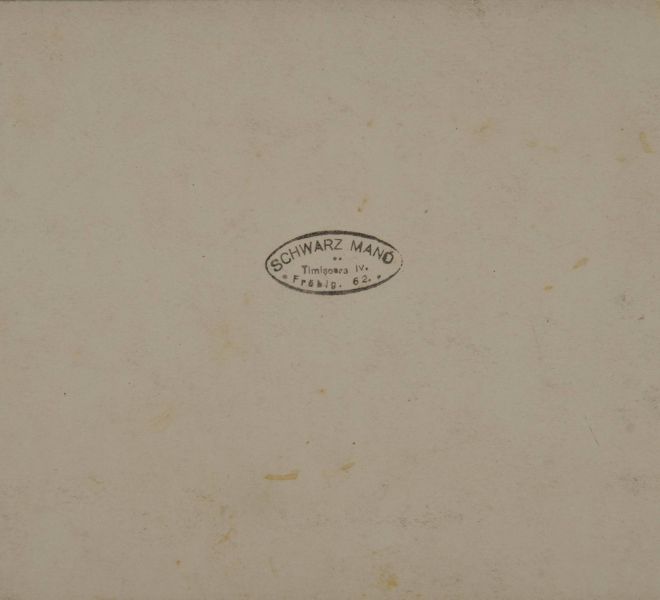3, Alexandru Odobescu Street
The Banat Sanatorium belonged to Dr. Ludwig Diel and had an important role in the process of hygienic-sanitary development of the Elisabetin neighborhood.
Listen to the audio version.
Dr. Ludwig Diel opened, at the end of the 1920s, along with Dr. Josephi and Dr. Miletics, the Banat Sanatorium on the current Alexandru Odobescu Street. In the 1940s, the sanatorium was purchased from the three doctors by the German Ethnic Group. At the end of World War II, the building was nationalized. Currently, the building is transformed and incorporated into the maternity and gynecology hospital.
The building has a semi-basement, ground floor, and first-floor, and is in the eclectic style with neo-baroqueinfluences. These influences can be easily observed in the frames of the gaps and the shape of the ventilation openings of the bridge. The first floor has a symmetrical composition on all three main facades, and the ground floor is quasi-symmetrical, due to the need to transform certain window openings into building entrance openings. It is a heavily decorated building.
Bibliography:
Josef Geml, The old Timișoara in the last half of the century 1870-1920, Cosmopolitan Art Publishing House, Timișoara, 2016.
Listen to the audio version.
Pia Brînzeu, Family Journal, Manuscript
Stop 9: The Banat Sanatorium (dr. Ludwig Diel), Alexandru Odobescu Street
June 25, 1924. Grandmother Netti is in the bathroom. She’s getting ready for a visit to doctor Amold Josephi’s, a friend of grandfather’s, and cannot find the right lipstick. She has a new Charleston dress, made by Mrs.Wilma Traxel. It would be a catastrophe if the colour of the lipstick were different from that of the dress: silk of a dark cherry red cannot accept a different tint in the lipstick. It would be even more catastrophic, though, if they ran late. A real lady never keeps the host waiting.
The extravagant Joli Josephi is also frantic. The iron for curling her blonde hair is too hot. She doesn’t want to get burned, nor does she want to welcome her guests with messy hair. In vain would she look stunning in her golden lace dress if her hair was not impeccable as well. She would upset her husband, who is always proud of her stunning looks, and he would certainly scold her for her undoubtedly inappropriate behaviour.
Doctor Josephi, a Transylvanian Saxon married to a Hungarian from the Transilvanian aristocracy and who had moved to Timişoara a few years earlier, has an elegant residence. From the balcony you can see people walking along the Corso, and in the living room there are woven rugs whose patterns replicate those from the Black Church in Brașov...
“You won’t believe it”, Mrs. Josephi tells Grandmother, “but I found two skilled weavers, whom I convinced to come stay with us. They are very good and can work after my drawings. I was so impressed by the Persian rugs in the Brașov church that I decided to move them into my own home. First, though, I had to spend a few hours drawing their pattern.”
“What a good idea!” Grandmother praises her, thinking it might not be a bad idea to take her cue from her. Besides the balls, concerts and receptions, besides the sour cherry brandy and the winter pickles, she would still have some time to take care of the rugs.
“The two weavers are not our sole employees: we have a nanny, a cook, a cleaning lady, and a driver. They are six in total. I feel like the manager of a small enterprise.”
“We also have a gardener working for us”, Grandmother announces, happy that she can outbid. “As you can see, we also have our own little enterprise. “
“Well, meine Damen, how about if we came up with a real enterprise then? We are two well-known doctors in this city and, if we manage to convince Doctor Miletics to join in, we could open a sanatorium. Then you, my ladies, could take care of the white rugs in the patients’ wards, of the menus, the cleanliness and tidiness in the hospital.”
This is how one of the most famous hospitals in Timişoara came into being, established at the beginning of the previous century under the name of the “Banat Sanatorium”. Although it still exists on Odobescu Street in Timişoara, the hospital has long changed owners; however, the friendship between the two families has endured intact throughout the decades. It has now reached the fifth generation.



